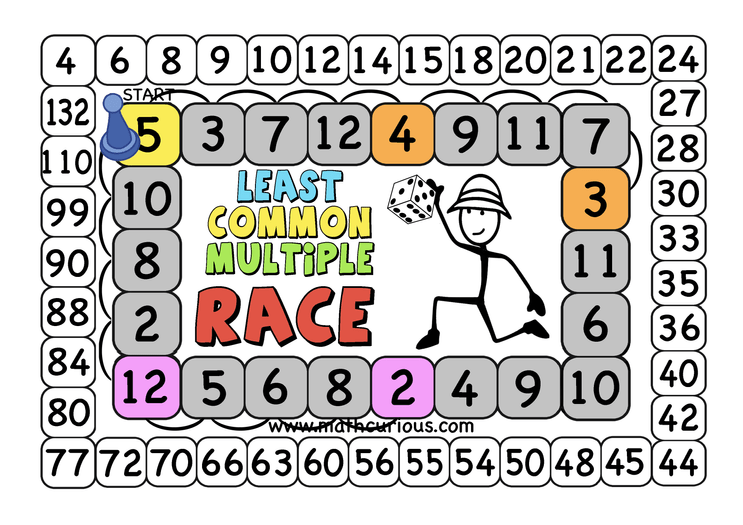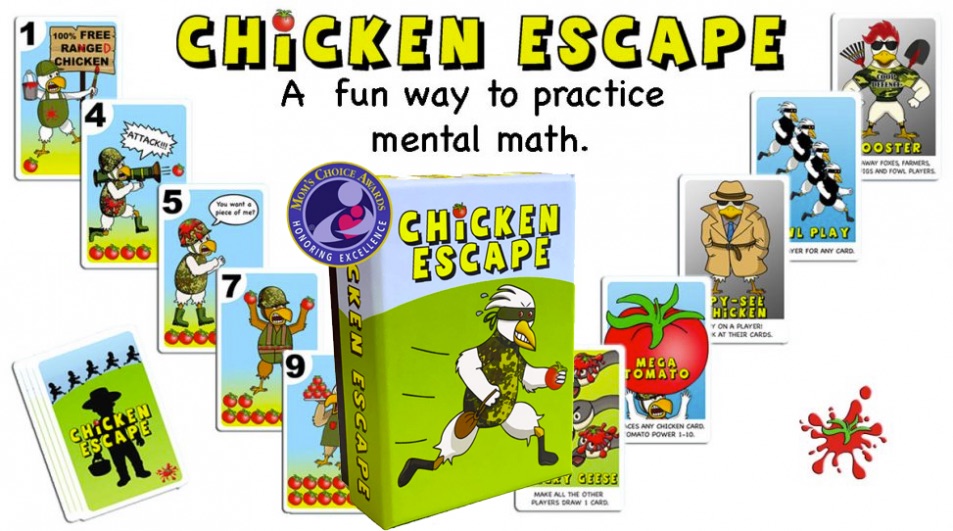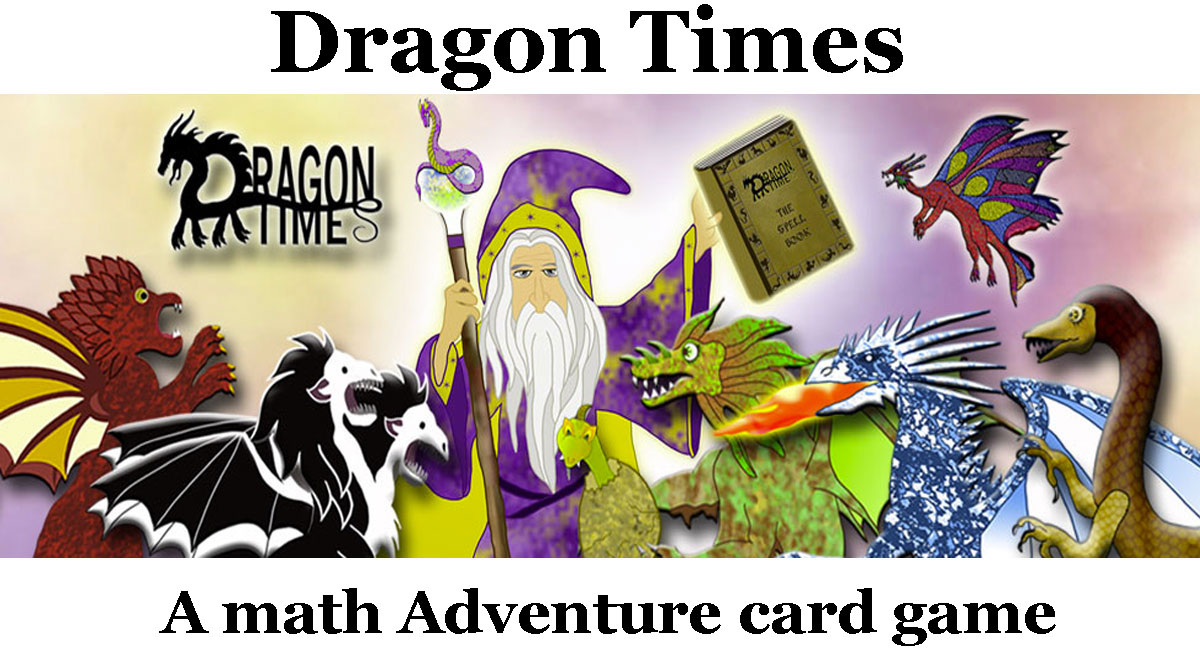New day new game! Today I would like to share with you a simple multiplayer game that I created to help my students practice finding the Least Common Multiple of two or more numbers (2-12). Being able to find the LCM quickly comes in handy when adding or subtracting, unlike fractions and we play this game a lot before starting with addition and subtraction of unlike fractions. If your students are fluent with their multiplication facts they will be faster in finding the LCM. If not, they can use the multiplication table until they become fluent. More about Adding Subtracting fractions. Allowing the students to use the multiplication table makes the game a low-floor high ceiling activity, and offers a great way to practice both LCM and the multiplication/division facts.
With “LCM Race” students practice finding the lcm of the numbers 2-12. The game comes in print to play version and in a google slides version. For the google slides version, you use a spinner 1-6 instead of dice. You need a 6-face dice, a different color pencil for each student, and a place marker for the print version.
How to play
The players take turns rolling one six-faced dice. They start from the yellow tile and they can move left or right on the inner rectangle as many steps as they rolled, two times, to get/land on two different numbers. For example, if a player rolls a 4 they can choose to move 4 steps left/down to get the first number (12) and 4 more steps left to get the second number (2). This way they get the pair (12,2). They can also choose to move 4 steps right to get the first number (4) and 4 more steps right from that number to get the second number (3). This way they get the pair (4,3). The players can choose one direction to move for each turn. Depending on the direction that the players choose to move and take their steps they will get a pair of numbers. (4,3) or (12,2). Next, they need to find the LCM of those two numbers and color it on the outer rectangle with their pencil color. The players cannot choose a pair or of the same numbers. ( in this case, they choose the other direction or skip a turn) Once they decide their way of moving, and get the pair of numbers, and color the LCM of those two numbers, they keep their place marker on any of those 2 numbers and the next player takes a turn. On their next turn, the players will move from where their place marker is.
As the players color the LCM numbers on the outer rectangle many numbers will be already colored and the players will not find a non-colored LCM tile for their pair. That is where the strategy comes in as they need to choose a direction that gives a pair of numbers whose LCM is not colored yet. If all choices are already colored they just wait for their next turn. The game ends when a player colors 10 tiles on the outer (LCM) rectangle.
Single Player
Some of my students like to play this game as a single-player game. They roll the dice and move and try to get 10 tiles marked in 20 rolls. They prefer it from a worksheet for practice.
Social Distancing
The students can use their own board each if you are still social distancing and compete who will get 10 tiles first. They can mark the opponent’s tiles as well. You can do this with almost all the print to play games. You can also play the game online in groups using the google slides version.
Below you will find the printable pdf and the google slides version of the game. You will also find a multiplication table for both versions.
Print version
Google slides version The google slides version uses a spinner instead of dice. Use the colored tiles to cover the LCM tiles.
I hope that you find this game useful.


